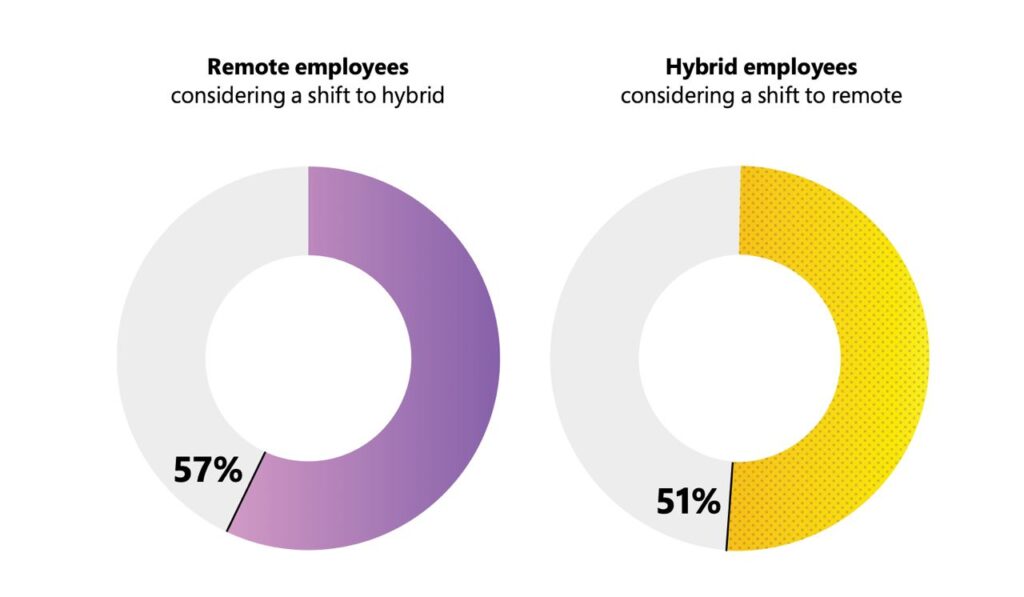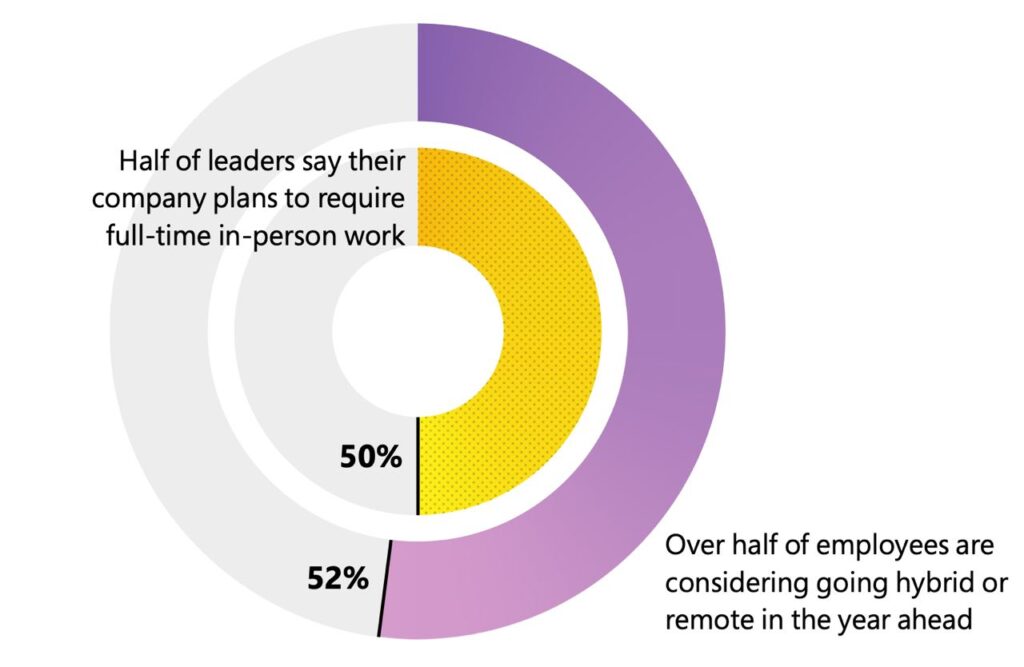
Above: Illustration by May Belice/Depositphotos.com
BitDepth#1347 for March 28, 2022
Microsoft issued its annual Work Trend Index on March 16, and it’s a timely document, considering trends in how and where work is done as the world emerges from the blanket of pandemic restrictions.
It’s even more relevant in Trinidad and Tobago, which seems depressingly eager for a return to work as surveillance in the workplace.
Has this country learned anything from a two-year course in hybrid work that nobody asked for? Are either the private or public sector ready to adapt after that experience?
In March 2020, the Occupational Health and Safety Agency of TT published a list of cautions for returning to work that remains relevant.
Nothing about how covid19 is transmitted has changed since then, but despite reduced hospitalisations, do we need everyone back right away?
The Government’s institutional attitude on the workplace remains very much rooted in presence and in-person accountability while the rudimentary online customer-facing tools implemented during the pandemic appear to be in the process of being rolled back or simply abandoned.
Microsoft’s report identifies five key findings that have followed the period of enforced hybrid work:
- Employees have a new “worth it” equation.
- Managers feel wedged between leadership and employee expectations.
- Leaders need to make the office worth the commute.
- Flexible work doesn’t have to mean “always on.”
- Rebuilding social capital (how comfortably employees work together) looks different in a hybrid world.
The bigger and more committed to bricks and mortar a business or public sector service is in TT, the more likely it seems that hybrid work will be dismissed as an aberration of covid.
While many small and medium businesses have been affected, some terminally, others have adapted.

One of them is Media InSite, a media monitoring firm led by Allison Demas.
On October 01, 2020, Demas took the company 100 per cent virtual after her staff settled into working from home and the company moved its media monitoring equipment to a co-location facility.
Media InSite’s staff proved productive working remotely and preferred it.
“Although I am a relatively reserved person,” Demas said, “I do miss personal interaction with members of my team.”
“I miss the office banter, the stale jokes, the bouncing off of ideas, the energy, the camaraderie. The biggest challenge has been keeping my team engaged virtually.”
There were also technical challenges. Finding a home for the media monitoring equipment was an early concern, along with ensuring that full-time employes had desktops or laptops and everyone had a reliable Internet connection with adequate bandwidth.
“The biggest challenge since making the switch has been maintaining employee engagement,” Demas said.
Most of her full-time employees (21 of 23) are millennials, so there was majority enthusiasm from these digital natives.
“Do a thorough cost benefit analysis before making such a decision,” Demas advised.
“Have an open mind and be flexible. Only if your brick-and-mortar model is imperative, given the nature of your business or organisation, should you reject the hybrid or remote work model.”
For Media InSite, the result has been a reduction in expenditure with the elimination of office rental and related business overheads with an increase in net profit.
Demas also reports increased productivity from staff, “(They) feel safe and secure working from the comfort of their homes or wherever they choose to work.”
Media InSite’s clients were already used to dealing with a digital company, so the change was seamless for them.

As more companies transform their operations to rely on automation and digital technologies, the difference between necessary presence and pointless attendance becomes more sharply defined.
The businesses of tomorrow won’t be the businesses of the past and the digital natives that Demas works with, along with their expectations, will be become a greater factor in hiring.
There is no reward to be had in rolling the black carpet for hours each day in both directions to attend a job, particularly now that it’s become clear that some of those jobs can be done just as well outside of a formally defined office space.
Expect the most talented of those new workers to choose jobs where they feel both professionally challenged and personally comfortable.



